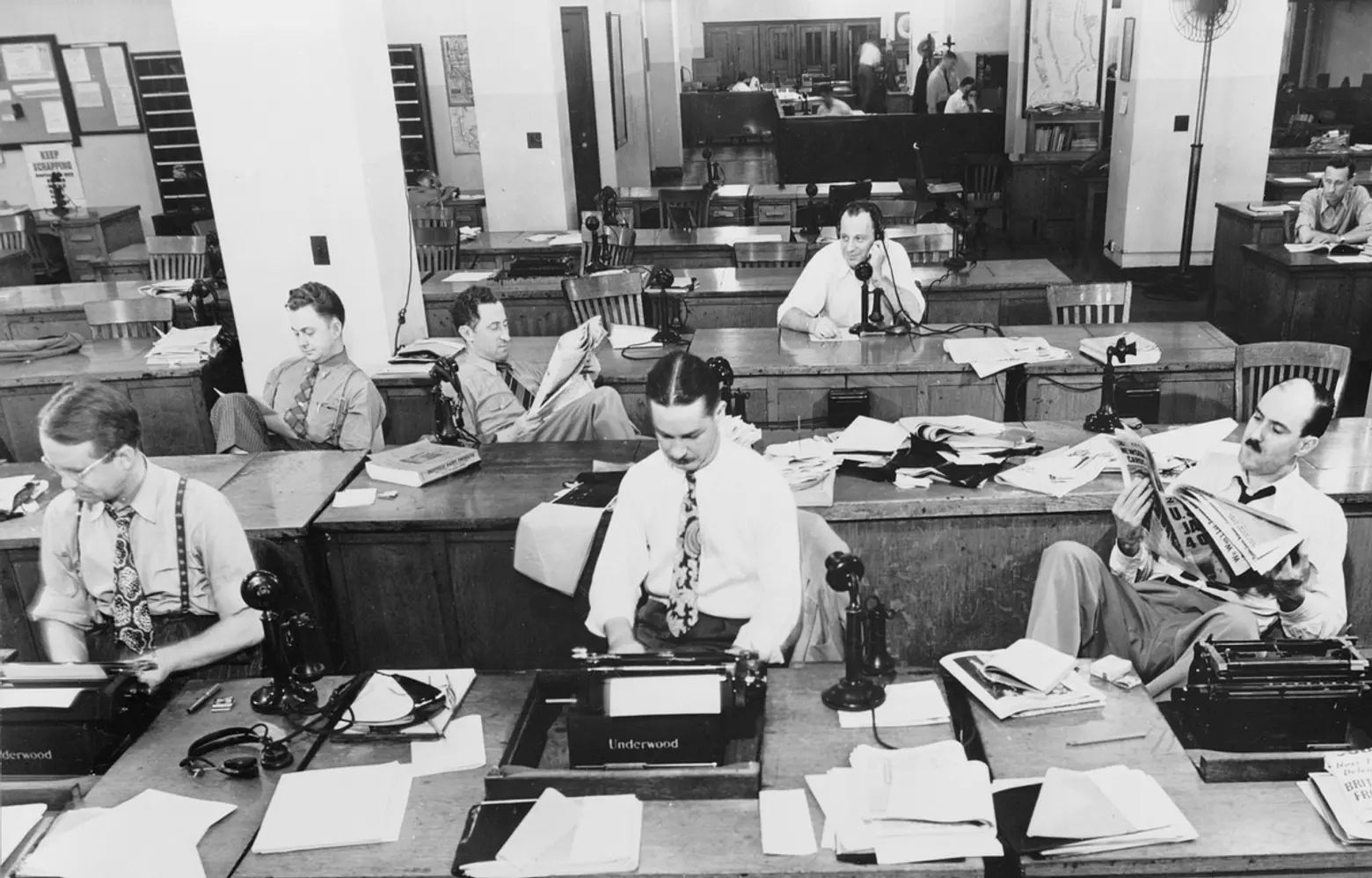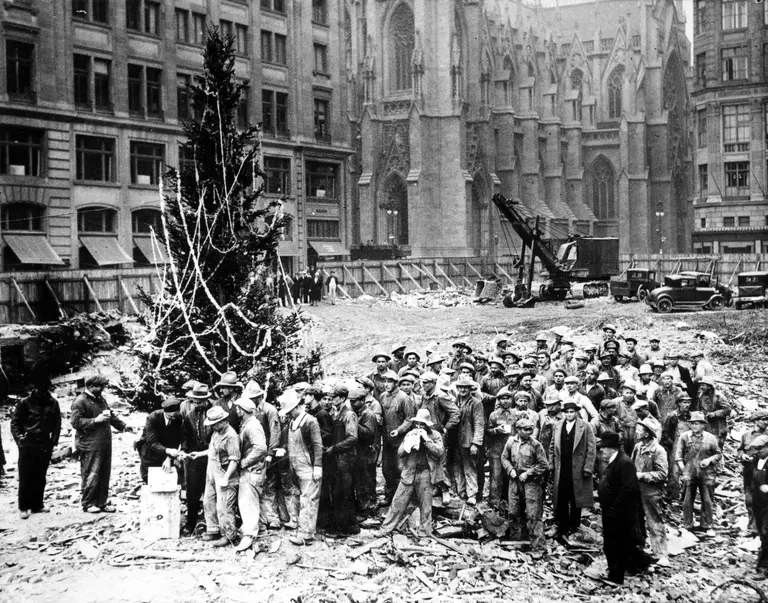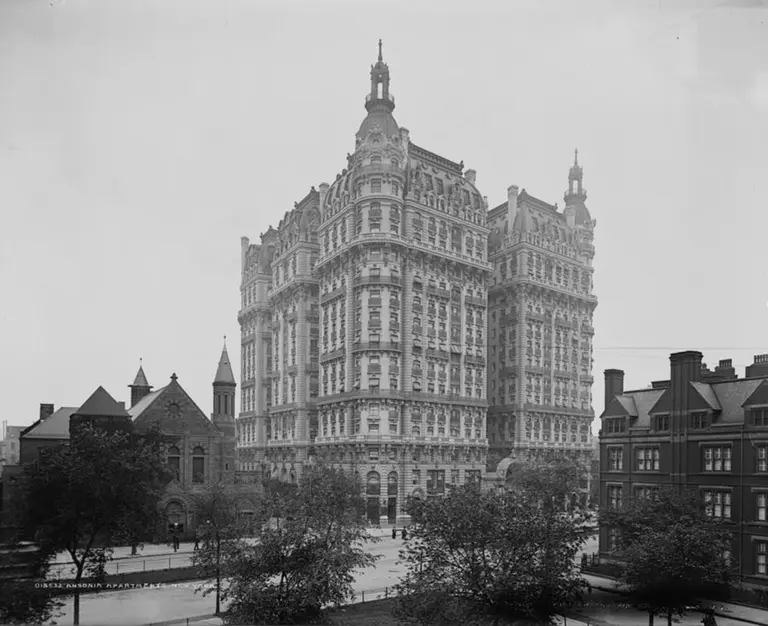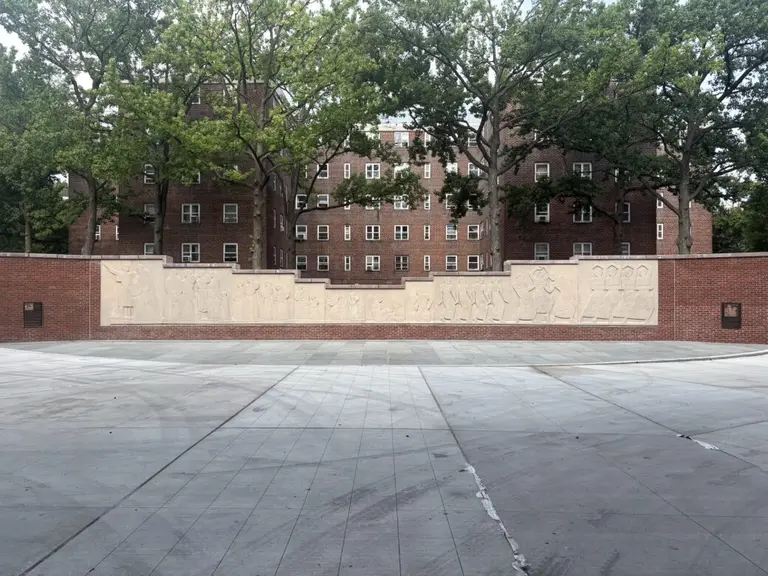How two 1960s strikes shaped NYC’s newspaper culture forever

New York in the 1960s was a city of news junkies. Even though 10 newspapers fed that appetite, some New Yorkers who read two papers every morning were heard to complain that there was only one in the afternoon. Today, there are only three papers in New York—the Times, the Post, and the Daily News, (The Wall Street Journal is customarily considered a business publication, not a general newspaper.), but of course, one’s media appetite is fed digitally. Back in the 60s, though, there were few other options.
So in 1962, when 17,000 newspaper workers went on strike for 114 days, and then again in 1965 for a whopping 140 days, crippling print publications, the starvation was keenly felt. These two events are also what ultimately led to NYC going from 10 to three newspapers.
All the daily New York papers in the 1960s were members of the Publishers Association, which conducted union negotiations. They were the New York Times, the New York Herald Tribune, the New York Journal-American, the World Telegram and Sun, the New York Mirror, the Daily News and the New York Post. The News published in the morning, the Post in the afternoon, as they do today. Two Long Island papers, the Star Journal and the Daily Press, were also members of the Publishers Association and were counted among those serving the metropolitan area.
There were 10 unions and nine newspaper-members of the Publishers Association in New York. The unions broke down into two camps: the Newspaper Guild covered editorial and commercial workers, while the craft unions were printers, mailers, pressmen, stereotypers, engravers, deliverers, paper handlers, machinists, and electricians. As a rule, the craft unions bargained as a
group; the Guild bargained with each paper separately. Sometimes, however, only some
of the craft unions banded together for negotiations. Some but not all newspapers did, too. The remaining ones negotiated separately, one on one, or one on nine, or two on seven, and so on and so on into utter confusion. There might be a settlement with nine unions but not the tenth, requiring individual negotiations with that one before publication could resume.
The Newspaper Guild chose the Daily News for a preliminary action in November 1962, because of all the papers, it had the rockiest management-labor relations, one group baiting and provoking the other in a back-and-forth rhythm. So it was business-as-usual that when the Guild struck the paper, management retaliated by printing on the presses of another one, the New York Journal-American. A settlement was reached for an increase of $8 a week.
Computerized typesetting machines were already starting to be used, which most observers believe was the real reason behind the demand for more money. This made sense when, a month later, negotiators for the nine newspapers offered the unions the same deal and they rejected it, asking for $16 a week instead.
On December 8, 1962, the New York Typographical Union under their leader, Bertram Powers, walked off the job at four papers. In sympathy, the management of all the others shut out workers. It was an unprecedented news black-out, and it went on for 114 days, until March 31, 1963.
Without their daily infusion of news, New Yorkers felt stranded. Papers from Boston, Philadelphia, and Washington were trucked into the city and sold out as soon as they arrived, sometimes for scalpers’ prices. But they were short on local New York City news.
Jumping into the breach, a new paper called the New York Standard debuted on January 6, 1963, with a publication schedule of six days a week (no Saturdays). Its staff of 80 came from the struck papers, and it used various printers with the intention to continue for the duration of the strike and no longer.
Though the Standard was the most ambitious, other papers stepped up to the challenge as well, including English language editions of Il Progresso and La Prensa. The Brooklyn Eagle expanded its coverage, and in February the first issue of The New York Review of Books debuted to take up the slack from book review sections of the blacked-out papers.
Television stations also beefed up news coverage to fill the gap by hiring idle reporters and became more prominent as a news medium. WABC-FM radio changed to an all-news format (before 1010 WINS); and Cue and TV Guide stepped in for television viewers, including more feature material in addition to schedules and program information.
Holding its breath as long as possible, the Post announced its withdrawal from the
Publishers Association and resumed publishing on March 3, 1963. Theodore W. Kheel, lawyer and labor arbitrator and mediator, was called in five days later, negotiating a settlement that gave the typographical union a more generous contract than the other unions and the strike ended March 31.
But it was a costly strike. The Times reported that the newspapers involved lost more than $100 million in advertising and circulation and that 19,000 employees lost $50 million. Newspaper circulation in general was down on both weekdays and Sundays, and though the Times and the Herald Tribune soldiered on, the Daily Mirror went out of business seven months later on October 15, 1963. When the strike was over, both the New York Times and the New York Herald Tribune raised their prices from five to 10 cents, and the upshot of it was that people now bought only one paper, not two, on their way to work.
The day after the strike ended, Bert Powers predicted that the strike would result in fewer papers. Shortly after that, Harry Van Arsdale, Jr., president of the New York Central Labor Council, predicted another strike in two years if attitudes didn’t change. Both men were right.
At the end of March 1965, contracts of 10 unions expired, affecting 17,000 employees. While automation had been sub rosa in all the 1962-63 actions, in the meantime newspapers nationally had installed nearly 120 computers to set type, so by 1965 the threat was seen in boldface.
Singling out the New York Times in June because it was strong enough to meet demands, the Newspaper Guild voted to strike if it didn’t get a settlement. By mid-September it had not, so a strike was called for two days later. Ted Kheel flew in from Denmark to help out. All other papers in the association said they would close in sympathy. That angered the Guild, which had intended to isolate the Times. Ultimately, the other papers were forced to suspend operations anyway because workers in the craft unions refused to cross the Guild’s picket lines.
The strike lasted three weeks and was over on October 7, 1965, with a two-year contract. The Herald Tribune resigned from the Publishers Association during this strike—Jock Whitney was apprehensive about the Tribune’s future—and Ted Kheel said he wouldn’t mediate for newspapers again, that papers needed to automate to survive and that workers would benefit more from the papers’ security than from contract guarantees.
But more problems were afoot. Weakened by strikes, suburban growth, and competition from radio and television, three newspapers agreed to merge in order to form an entity big enough to survive. They were the World Telegram & Sun, the Journal American and the Herald Tribune. As their names suggest, all of them were products of past mergers. The new paper was to be known as the New York World Journal Tribune, coming out morning, evening, and Sundays starting April 25. The announcement came about two weeks before publication date.
Caught by surprise, all ten unions threatened a strike against the not-yet- born paper, saying it would result in the discharge of about 35 percent of the 5,700 workers they represented. If the merged paper could not begin to publish, a newspaper spokesman said, the component papers would fold. One issue was whether contracts in force for the predecessor papers held good for the merged one. Publishers said they did. If so, said Bert Powers, head of the Guild, his workers would show up at the offices of the old papers, not the new one. His workers were ordered not to do any work until new contracts were arrived at.
Another issue was choosing which workers to keep, which to lay off. Unions said tenure had to be based on seniority; publishers wanted to select which ones stayed. How much the discharged workers would be paid in addition to severance pay was also being discussed.
Just before the scheduled publication date, all three of the merging papers printed good-bye letters in their papers, saying the merger would allow them to keep going. In response, the Guild promised a strike. Senators Jacob Javits and Robert Kennedy, Governor Rockefeller and Mayor Lindsay all offered to help. The president of the American Newspaper Publishers Association said the merged company might never produce a paper if the unions didn’t ease up, and Mayor Lindsay said he thought the papers would fold soon without a settlement.
Talks went on until finally, in September, after 140 days, there was a settlement. It was the longest strike in American newspaper history. The WJT, informally referred to as “Widget,” made its debut on September 12, 1966, with an initial press run of 900,000 copies of an 80-page paper. Mayor Lindsay pressed the button that started the presses rolling. Six weeks later, Bert Powers announced that he wanted “big, fat raises from big, fat papers,” and indeed when contract negotiations began in January he asked for a 20 percent increase in pay, generous vacations, and long sabbaticals up to a year off after 25 years.
Negotiations began, were broken off, resumed. Ted Kheel joined the talks even though he had said he wouldn’t. And then, on May 6, 1967, the New York World Journal Tribune announced that it was going out of business after just eight months. The day it died, Bert Powers took out a full-page ad in the New York Times saying it wasn’t his fault. And that is why we have only three daily newspapers in New York today.
RELATED:
- The Urban Lens: Vintage photos show the New York Times’ 1940s printing process
- The history of New York’s Newspaper Row, the epicenter of 19th century news
- The History of Herald Square: From Newspaper Headquarters to Retail Corridor
Lead image: New York Times in 1942 via Pixabay




























